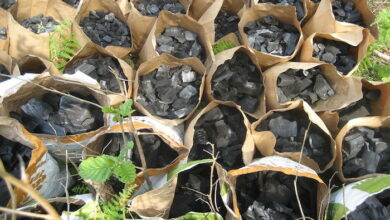
Weeds Aren’t Actually All That Bad
Weeds, many say, are but misunderstood plants, plants that have somehow fallen out of favor. Often, they are ready growers, keen to pop up where space has allowed, and typically they are doing so to perform some sort of vital ecological function. Geoff Lawton says they are “symptom” of a flawed situation rather than the actual problem.
Weeds are working to right wrongs. They cover the ground. They prevent erosion. They break up compacted soil. They mine out minerals. They provide a botanical history of the land. They fertilize depleted soils, some of them fixing nitrogen or providing other vital nutrients. And, that’s not even getting into the fact that many weeds are perfectly delicious edibles.
What they do not do is arrive for no reason.
Examples of Functional “Weeds”
Dynamic accumulators are generally weeds that have taproots that dive deep into the soil to pull up minerals and vitamins other plants can’t reach. The dynamic accumulators deposit their typically large leaves atop the soil, and as they decompose, the nutrients replenish where plants with shallower roots can access them. Comfrey (Symphytum species), dandelions (Taraxacum officinale), lambsquarter (Chenopodium album), and chickweed (Stellaria media) are all considered dynamic accumulators.
Generally, dynamic accumulators like dandelions or comfrey are great for breaking up compacted soils, but plants with hairnet roots or clumping tendency are common for areas where erosion seems likely, such as recently disturbed soil. Ground ivy and spreading grasses (crab grass, Bermuda grass, Johnson grass, quack grass, etc.) are all examples of plants working to keep soil from washing away.
Another function weeds, or shall we say certain sometimes unwanted plants, perform is to reestablish a balanced nutrient profile. Bracken ferns grow in places that have burned and now lack phosphorus, working to recover the element. Thistle, on the other hand, could indicate shortages in copper and iron. These plants are good at finding these elements and replenishing them.
Learning to Use “Weeds”
In short, it’s important that, rather than dwelling on the eradication of weeds, we spend some time learning how to use them. Their presence is indicating somewhere we might be able to improve our gardens, be it a missing nutrient, unbalanced soil pH, or many other things. It’s much more productive to investigate what the weeds are saying than simply cursing them from the start.
Once we begin to look for reasons weeds are growing as opposed to constantly preening our garden beds, we have the opportunity to learn from what is naturally happening in our soil. And, once we stop looking at these plants as problems, rather than indicators, we can begin to develop relationships with them. Believe or not, working with weeds can be very rewarding.
Ultimately, permaculture systems might even have “designed weeds” to fill in certain niches within our gardens. Leguminous weeds such as vetches (Vicia) and Russian olives (Elaeagnus angustifolia) are often despised, but they are fantastic for repairing depleted and mistreated landscapes. They fix nitrogen into the soil to make way for other plants to grow.
Realizing the Potential of Weeds
For me, I’ve really become enamored with eating weeds. Lambsquarter is absolutely delicious, as well as very nutritious, so much so that some gardeners cultivate it rather than pull it. Purslane is a great plant-based source of Omega 3 fatty acids. Chickweed is a mild, tasty green than pops up before garden greens grow. Wild onions and ramps are prolific where I’m living and provide some great springtime fodder. There is so much potential for foraging food via weeds. The amazing thing is that, if we just eat the weeds, we’d be clearing some of them away from our crops at the same time.
Anyway, many permaculture gurus are apt to wax poetically about weeds and how important a working rudimentary knowledge of them is. Our own Geoff Lawton has put together a great little 10-minute video to get his take on weeds.














I agree that some weeds are useful and tasty. Can anyone give me a reason so much capeweed grows at my place? I have half an acre of capeweed invested grass/garden. I read in a European biodynamic book that yellow flowered weeds show the soil needs lime so I covered a sample area with dolomite and it had no effect. The drought affected everything else but, as expected, the capeweed flowered then died off leaving thousands of seedlings which are currently appearing where other grasses died. Is there hope that they will die off when the soil has been ameliorated? I am surrounded by farmland and don’t want it to spread to my neighbours pastures! There are paddocks not far from here that are golden in spring from capeweed flowers, just like my place.
Reminds me of when I was farming below a cattle farmers hillside and he roundup’d all the Camphor laurels on the hillside. We had a heavy wet season event and the whole hillside came crashing down destroying 2 dams and a lot of my organic farm below.
Moral of the story is that Camphors and other weeds are doing a job even though most of us fail to recognize their importance.
Totally agree on making the most of some of these plants. After previously struggling to get rid of purslane I’m now at peace with it and enjoy having it in my salad. Most people just don’t realize you can eat it.